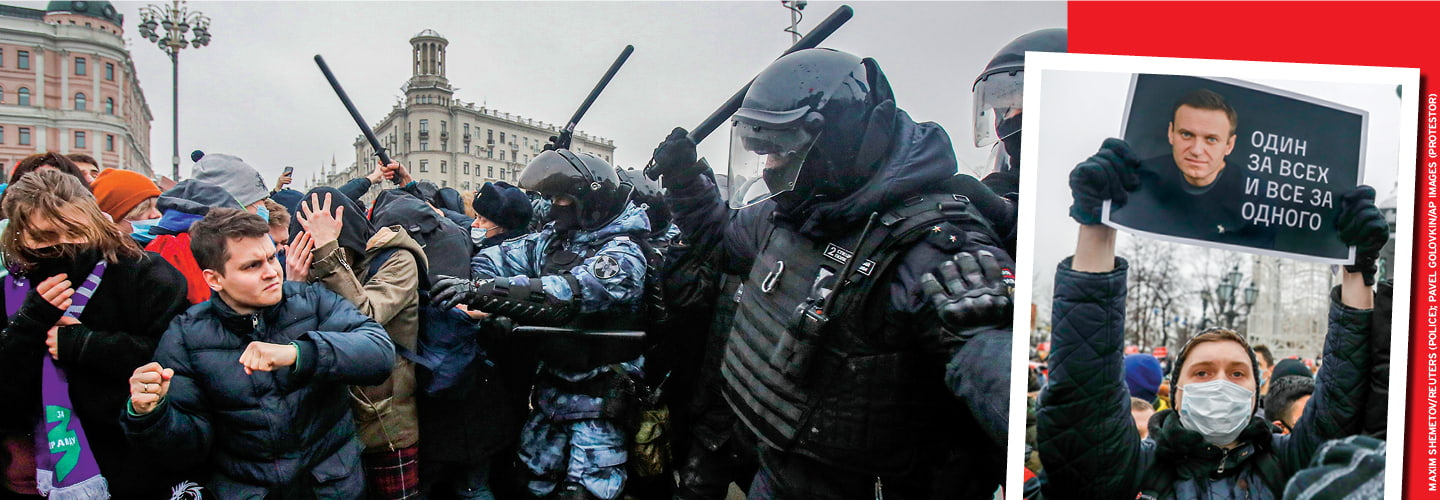Alexey Nikolsky/AFP via Getty Images
Vladimir Putin
For more than two decades, Vladimir Putin has maintained an iron grip on power in Russia.
When term limits required that he surrender the job of president in 2008, he handpicked Dmitri Medvedev to run as his successor and stayed on as prime minister, maintaining control behind the scenes. When Medvedev’s term was up in 2012, Putin ran for president again and maneuvered to have the term-limit law changed to allow him to stay in office longer. Over the years, some of those who openly challenged Putin’s authority have died under suspicious circumstances.
Now a wave of protests is sweeping across Russia, prompting the question of whether Putin’s dominance is weakening.
The arrest of opposition leader Aleksei Navalny when he returned to Russia in January sparked massive demonstrations. Outraged by Navalny’s arrest—and by the YouTube video he released showing a lavish palace President Putin was secretly building for himself on the Black Sea—tens of thousands of Russians took to the streets, not just in the capital, Moscow, and in St. Petersburg, but also in cities and towns across the vast nation.
Russians were upset about Navalny’s arrest as well as the deep corruption revealed by the video and about deteriorating economic conditions.
For more than two decades, Vladimir Putin has maintained an iron grip on power in Russia.
In 2008, term limits required that he surrender the job of president. He then handpicked Dmitri Medvedev to run as his successor. But Putin stayed on as prime minister, maintaining control behind the scenes. When Medvedev’s term was up in 2012, Putin ran for president again. Then he was able to have the term-limit law changed to allow him to stay in office longer. Over the years, some of those who openly challenged Putin’s authority have died under suspicious circumstances.
Now a wave of protests is sweeping across Russia. The resistance is prompting the question of whether Putin’s dominance is weakening.
Opposition leader Aleksei Navalny returned to Russia in January. He was arrested when he arrived, which sparked demonstrations. The YouTube video Navalny released showing a lavish palace President Putin was secretly building for himself on the Black Sea also fueled outrage. Tens of thousands of Russians took to the streets. The protests spread beyond the capital, Moscow, and St. Petersburg, reaching cities and towns across the vast nation.
Russians were upset about Navalny’s arrest as well as the deep corruption revealed by the video and worsening economic conditions.

